Mystical Muslim Music
Saturday evening, in the midst of the sudden October snowstorm that was happening outside, I was warm and dry in the vaulted theater of The Metropolitan Museum of Art's Grace Rainey Rogers Auditorium, next to the Egyptian mummies (very fitting location). I was there with my friend, international fitness icon, Sarina Jain, attending an evening of traditional music from two groups that perform and sing in order to connect themselves and their audiences closer to a higher being. It was a calm beginning, a yellowish light on the stage, with a soft-spoken woman who introduced what was to come; once the first group entered and stepped foot into the light, the audience began with an uproar. These men would soon bring everyone on a journey with them to a state of ecstasy. This group was the Qawal Najmuddin Saifuddin & Brothers, Pakistan's gem qawwali ensemble of five brothers and one cousin, all direct descendants of the first ever qawwali choir of Amir Khusrau (the creator and father of qawwali music almost 800 years ago!). Talk about family tradition, this unbroken lineage of singers and musicians not only preserves the purity of the musical style, but the musicality of the performers is incredible: family musical groups, especially singers, have an infamously beautiful sound even for simple biological reasons: the vocal cord structure is so similar, the tone and sound of each member's voice blend perfectly together because of their own DNA. Add on top of that the father of qawwali music hand picked his singers back in the 13th century, making them the closest group to perfection. Almost 800 years later, their musical lineage is still strong and divine. This video is just a taste of the musical beauty that I witnessed on Saturday evening:

Following the brothers' short set (they finished with a thunderous song made famous by the legendary Nusrat Fateh Ali Khan), a loud metallic sound with a quick, syncopated rhythm came in from the back of the theater. Men dressed in colorful, silk frocks with leather, pointed-toe slippers and versions of a taqiyah (cap) with a tassle hanging from the top, appeared from the back of the audience, dancing and playing drums and large, metal castanets. Their evocation of the divine spirit began with the circular dance that brings them to a state of trance and meditation. Hassan Hakmoun and Friends, performers of the Moroccan Gnaoua music, entered the stage like their ancestors making the enslaved march from the sub-Saharan region of Africa to the north in Morocco. This style of music and healing ritual is a cross between traditional Islamic music with African drum influence. A soulful and almost funky sound, this group was a contrast to the sufi mysticism before them:
The Gnaoua tradition includes semi-acrobatic dances, trance-like spinning, and also fancy foot tapping/stomping that could well be a the great-great-grandfather of American tap dancing. Polyrhythms and syncopation are what drove these songs and dances ahead.
 We were then delighted when the qawwali group joined Hassan and his musicians for two more numbers, performing together, both groups sharing their own forms and merging the two schools for the same elevated goal. A fantastic sitting of call and response, imitation, improvisation, and veneration, these two mystical Muslim musical groups truly exemplified the beauty found in the Islamic religion.
We were then delighted when the qawwali group joined Hassan and his musicians for two more numbers, performing together, both groups sharing their own forms and merging the two schools for the same elevated goal. A fantastic sitting of call and response, imitation, improvisation, and veneration, these two mystical Muslim musical groups truly exemplified the beauty found in the Islamic religion.
 Qawal Najmuddin Saifuddin & Brothers are making their US debut from Pakistan this year and will continue their tour throughout the country until next week - check out their schedule and be sure to take this opportunity to see them live, it is something you definitely want to experience first hand! And thank you, brothers of Islam, for bringing my soul that much closer to a better place in this life.
Qawal Najmuddin Saifuddin & Brothers are making their US debut from Pakistan this year and will continue their tour throughout the country until next week - check out their schedule and be sure to take this opportunity to see them live, it is something you definitely want to experience first hand! And thank you, brothers of Islam, for bringing my soul that much closer to a better place in this life.
